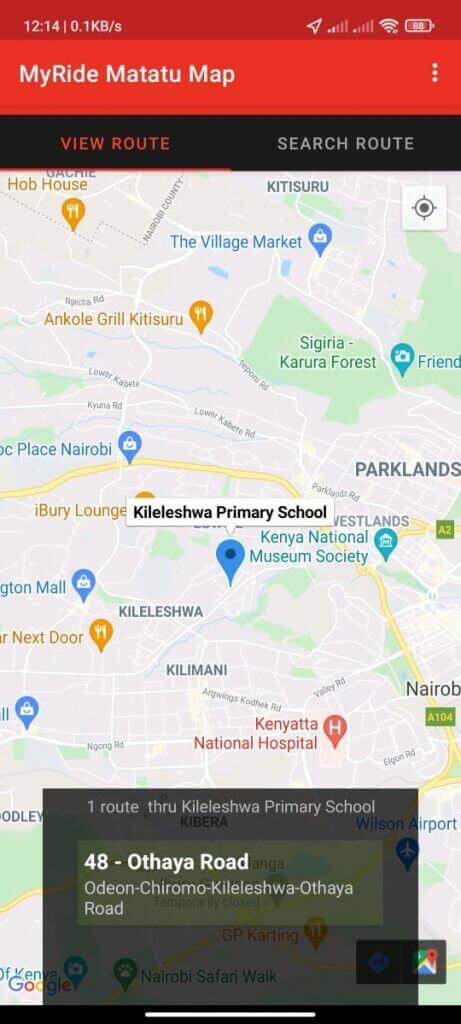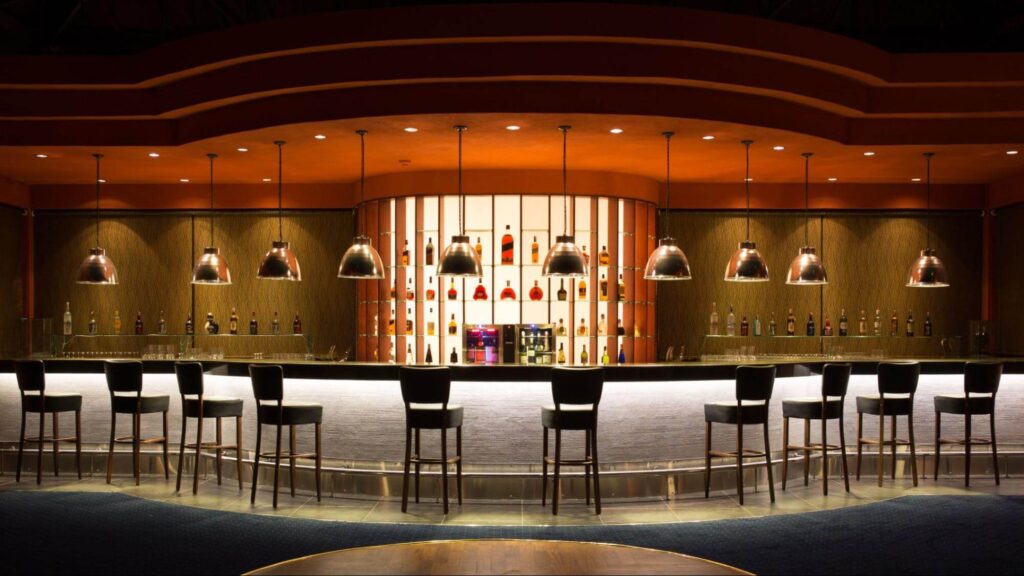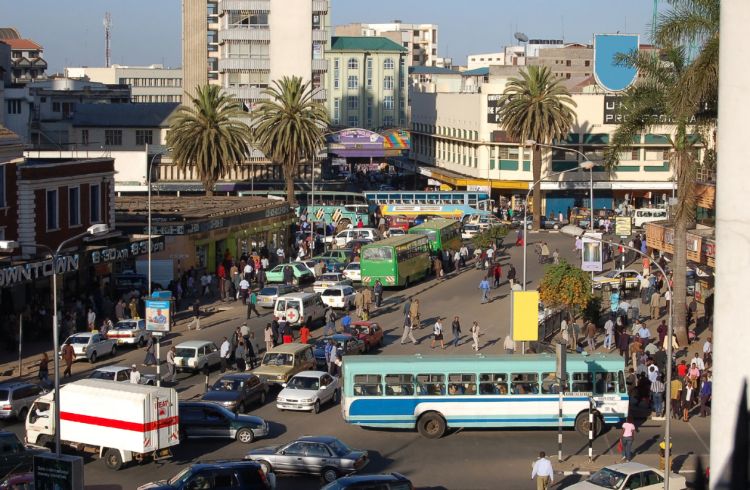While the capital city of Kenya, Nairobi, is quite small and has a lot to offer tourists from abroad, it is not always secure for visitors to explore on foot. In addition, a large number of Nairobi’s main tourist attractions are found in the suburbs of Karen and Langata.
Even though there may be some safety concerns related to overcrowding and vehicle upkeep, taking public transport can offer valuable insight into the local way of life. In this article, we examine every possible option of transport in Nairobi, including matatus and buses as well as cabs on demand and ride-sharing websites.

Image credit – Statista
Key Statistics
1. Transport and storage added 1,384 billion Kenyan shillings (KSh), about 11.7 billion U.S. dollars, to Kenya’s GDP in 2021.
2. In 2020, new registrations of motor vehicles in Kenya totaled about 347,000.
3. When asked about the “Most used mobility services”, most Kenyan people picked “Local public transportation” as an answer. 79% did so in Statista’s online survey in 2022.
4. When asked about the “Attitudes towards mobility”, most Kenyan people picked “Owning a car is important to me” as an answer. 59% did so in Statista’s online survey in 2022.
5. 46% of Kenyan people answered Statista’s survey on the “Mobility service online bookings” with “Taxis”. The survey was conducted in 2022, among 1,047 consumers.
Transport in Nairobi: A Beginner’s Guide
Here are the modes of transport in Nairobi that you should know before you visit. But are you looking for the best outdoor restaurants in Nairobi or the best dinner restaurants in Nairobi? Where to stay in Nairobi? Keep reading.

Image credit – https://livinginnairobi.com/
1. Matatus
What to do in Nairobi? Matatu, a mode of transport in Nairobi is used by 3 million of Nairobi’s 4.5 million commuters because they provide service to suburbs and the city that buses cannot. Minibuses called “matatus” are privately owned and driven by a conductor. The conductor welcomes passengers, collects fares, and informs the driver of stops and pickups.
Many matatus have intricate designs. They include vibrant artwork of well-known people, sports teams, and world events. To entertain the travelers, they also have TVs and music. It is a cultural experience that every tourist should try. See the Matatu culture photos and video below.
Keep the following in mind if you decide to go by matatu.
- A lot of locations in and around Nairobi are connected by minibusses, which adhere to set routes and compete with one another for passengers.
- During rush hour, Matatus often runs as an expedited service with a single point of pickup and delivery. Other times, they tend to make a number of stops along the way.
- Consult this map from Digital Matatus for the most precise data regarding Nairobi’s Matatu routes.
- You can board at any of the specified stops and hand cash to the conductor when you do so. Prices change depending on the driver, the climate, and the amount of traffic, with expenses rising during bad weather or rush hour.

Image credit – https://africa.itdp.org/
2. Buses
The safest method of transport in Nairobi if you’re new here but are used to public transport in other parts of Kenya is to take a bus. There are now bus stops at the bus station, Ambassadeur Hotel, General Post Office (GPO), and Kencom House structure in the CBD.
Similar routes are served by three major bus operators. These are City Hoppa (yellow and green), Double M (purple), and The Kenya Bus Services – KBS (blue). Despite not being as flexible, buses are better than Matatus for a number of reasons.
- Even in rush hour, buses stick to a set path. You’re less prone to experience confusion or anxiety.
- Bus stops have designated pick-up and drop-off locations. This makes any planning for public transport simple since the points are well recognized.
- At the pickup places, buses have visible signs displaying the routes and areas they service.
- A conductor will be at the door to assist you and answer any questions you may have. If you are getting close to the incorrect bus, they will point you in the right direction.
- Tickets are used on buses. This lowers your risk of being scammed.
- The cost of a bus varies based on the time of day and the distance traveled. However, the prices are fixed and visible at the door and on the bus’s frame.
Nairobi BRT Plan
The government is trying to ease traffic in Nairobi through the creation of the Bus Rapid Transit system. The Thika Superhighway is the first major route where specific bus lanes are part of the BRT. The passengers will then board and exit the buses at the constructed stops in the middle of the street. In order to provide access to the other sides of the road, these stations are joined to flyovers.
Matatus and other privately owned public service vehicles (PSVs) will only have a limited amount of access to the CBD thanks to the BRT. They will transport passengers from satellite residential areas to BRT terminals and run routes that the BRT does not cover.
The Nairobi Commuter Bus System (NCBS)
A new commuter bus system in Nairobi County has been revealed in an effort to enhance the city’s public transport system. The World Bank, the African Development Bank, and the Nairobi government worked to create the Nairobi Commuter Bus System (NCBS). It is intended to offer Nairobi residents a reliable, economical, safe, efficient, and safe public transit service.
It is intended to hold up to 1,000 customers who use the service daily. The buses will have dedicated lanes and drive at up to 40 km/h for short journey times. A real-time monitoring system will be included in the NCBS to give passengers access to the most recent data about the buses like their arrival times, routes, and prices.
The NCBS will reduce Nairobi’s traffic congestion and pollution while also enhancing citizens’ access to jobs and services. According to estimates, the bus system may cut travel times by as much as 30%. The NCBS will provide hundreds of jobs for staff members and drivers.

Image credit – https://livinginnairobi.com/
3. SGR Trains
From Mombasa to Naivasha, there is a railway track known as the Standard Gauge Railway (SGR). The first segment, which was finished in 2017, connected Mombasa to Nairobi. In 2019, the stretch to Naivasha was finished. It is expected that the railway will connect to other SGRs in the East African region.
The Madaraka Express departs from the terminus station in Syokimau and arrives in Mombasa in only 5 hours. Athi River, Emaili, Kibwezi, Mtito Andei, Voi, Miasenyi, and Mariakani stations are among the stops made by the Inter-County Train, which departs twice daily. The SGR provides riders with glimpses of two of Kenya’s best national parks as it travels between Tsavo West and Tsavo East.
SGR Commuter Train

4. Local Taxis
Due to their ease and privacy, taxis are one of the most popular ways of transport in Nairobi for tourists. Nairobi’s authorized cabs are identified by a yellow stripe. Most of the city’s street corners are where you can find them, but they also often wait outside popular attractions and upscale hotels. The only choice after dark is to take a taxi (or ride-share), and they often gather in front of eateries, pubs, and nightclubs.
Be careful that despite being more handy than buses and safer than matatus, taxis can be expensive and poorly maintained. Few have functional meters, so make sure to negotiate a fare before boarding the vehicle. There will be bargaining, and the final price for a trip within the city center should be around 500 KSH. From the CBD to Karen or Langata, it will be about 1,200 Kenyan shillings. Privately run taxis, like those run by Kenatco, are in better shape than privately owned ones and can be reserved online for added convenience.
[Suggested Read: 12 Tips for Traveling to Kenya & Stay at Ole Sereni]

Boda Bodas
When you are outside of the CBD, boda bodas are a quick method of transport in Nairobi. A lot of the country’s towns and commercial hubs are home to these transit motorbikes. Most Boda Bodas operate on their own. They stand out thanks to their vivid hues, drivers who are wearing safety vests, and additional helmets on the motorcycles.
The most adaptable mode of public transit in the nation is the boda boda. You can be delivered from one door to the next. They move fast and can take routes and shortcuts that are inaccessible to taxis and buses. If you’re pressed for time, they are your best choice. Your distance and negotiation skills will determine how much your Boda Boda ride will cost.

Image credit – https://nairobinews.nation.africa/
5. Ride-sharing Apps
While they are still an emerging trend in Nairobi, ride-sharing apps like Uber and Bolt have rapidly proven themselves as one of the finest methods for tourists to get around the city. But is Uber safe in Nairobi? They often charge less than traditional taxis and give tourists great peace of mind. First of all, ride-share drivers are subject to background checks and are required to keep their cars in a specified condition. Drivers are further motivated to maintain vehicles in good operating order, abide by traffic laws, and treat passengers with courtesy and respect since customers rate their service.
Another aspect of safety for your trip is the capability to update friends and family on where you are and your progress. Finally, rather than needing to flag down a cab on the street, you can order a trip using your smartphone.

Image credit – https://www.citizen.digital/
6. Personal Transport
Another practical choice is to rent a car if you intend to stay in Nairobi for more than a day or two and feel at ease navigating the city’s congested streets. From the Jomo Kenyatta International Airport, a number of reputable global vehicle rental firms (such as Europcar and Avis) operate. Drivers must be between the ages of 23 and 25 and possess a valid credit card in their own name, depending on the rental agency.
Consider getting a GPS to help you navigate the city since there aren’t many road signs there and keep in mind that Kenyans drive on the left. There are different levels of road repair in Nairobi, with more potholes in the suburbs than in the city center. Consider employing a business like Adventure Upgrade Safaris that also provides chauffeurs if you like the concept of having your own car but are uneasy behind the wheel.
Stay tuned to learn more about the best food in Nairobi and the best places to eat in Nairobi.
Where Should You Stay in Nairobi? Which Transport in Nairobi is the Best for You?
Finding the best hotels near Wilson Airport Nairobi? Ole Sereni Hotel is an iconic hotel located in Nairobi, Kenya since 2009. It is the best place to visit in Nairobi. It stands out not only for its 134 exquisitely decorated suites and rooms in Nairobi but also for its stunning views of Nairobi National Park and the city. Key features of one of the best hotels in Nairobi include:

1. Location: Where is Ole Sereni Hotel located? Searching for hotels around CBD Nairobi? Our hotel’s prime location on Mombasa Road offers convenient access to both JKIA and the city center. It’s also adjacent to Nairobi National Park, providing guests with a unique wildlife experience.

3. Dining: Our hotel boasts many dining options – Eagle’s Steakhouse (one of the best seafood restaurants in Nairobi), The Big Five Restaurant (one of the best Indian restaurants in Nairobi), Waterhole Sports Bar (one of the best bars in Nairobi), Ngong Pool Bar, and the best in-room dining services.
Guests can enjoy a variety of local and global favorites prepared by Group Executive Chef Torsten Schubert and his team. All our restaurants and bars give the best view of the Nairobi National Park. Read about the best wedding venues in Nairobi below. Click below for the best restaurants in Nairobi.

4. Meetings and Events: Finding conference rooms in Nairobi or wedding packages in Nairobi? We offer versatile meeting rooms in Nairobi and event spaces suitable for conferences, seminars, weddings, and other gatherings. These spaces are equipped with modern tech and supported by professional staff.

5. Wellness and Recreation: Finding the best hotels in Nairobi with swimming pool? Facilities include a fitness center (the best gym in Nairobi), an outdoor swimming pool, and the Duma Salon & Spa where guests can unwind and relax after a day of activities.
6. Unique Experiences: Go on a safari from Nairobi, take cultural tours at Bomas of Kenya and Kazuri Beads Factory, or visit the Aberdare National Park or Lake Nakuru National Park on a full-day excursion and much more. Contact our travel desk or concierge for the best experiences and transport in Nairobi.
Overall, the Ole Sereni Hotel offers a unique blend of luxury, convenience, and natural beauty. Making it a popular choice for visitors to Nairobi who want to experience the city’s vibrant culture and wildlife attractions (safari in Nairobi National Park). All while enjoying top-notch accommodations and services.
When staying at Ole Sereni in Nairobi, choosing the right mode of transport depends on your needs, budget, and the purpose of your travel. Nairobi offers various transport options to explore the city as discussed above.
The best mode of transport for you will depend on your comfort level, schedule, and the places you want to visit. It’s a good idea to research and plan ahead to ensure a smooth and enjoyable experience during your stay in Nairobi.
Tips for Getting Around with Transport in Nairobi
Since Nairobi’s transport choices are all dependent on the road, peak traffic times affect each and every one of them. To avoid being trapped in traffic for several hours, try to avoid traveling during the morning or afternoon commute.
Make sure to bring a little cash and small notes with you if you decide to take a bus or matatu. If you don’t have the correct fare, you risk spending more than necessary because change can often be unavailable.
Be mindful of what you are carrying at all times when using a matatu or bus to prevent pickpockets and robbers.
It is often less costly to hire a driver for the day rather than paying for each trip separately if you choose to take a taxi and want to make many excursions in one day. This should be something that your hotel can set up for you.
If you decide to rent a car, be sure to keep your doors locked and your windows down when driving through the city, especially at night. Also, never leave valuables on display when you park.
Stick to the major streets and avoid carrying heavy cameras or wearing showy jewelry if you decide to explore Nairobi on foot. In Nairobi, we advise against taking a nighttime solo stroll.
Taking a guided tour that includes transfers to and from your hotel is the best alternative. Or you can use any of the above-mentioned modes of transport to visit the main attractions. Planning holidays to Nairobi? Looking for the best 4 star hotels in Nairobi or conference facilities in Nairobi? Stay at Ole Sereni for impeccable service and contact our travel desk for unique experiences and transport in Nairobi.




